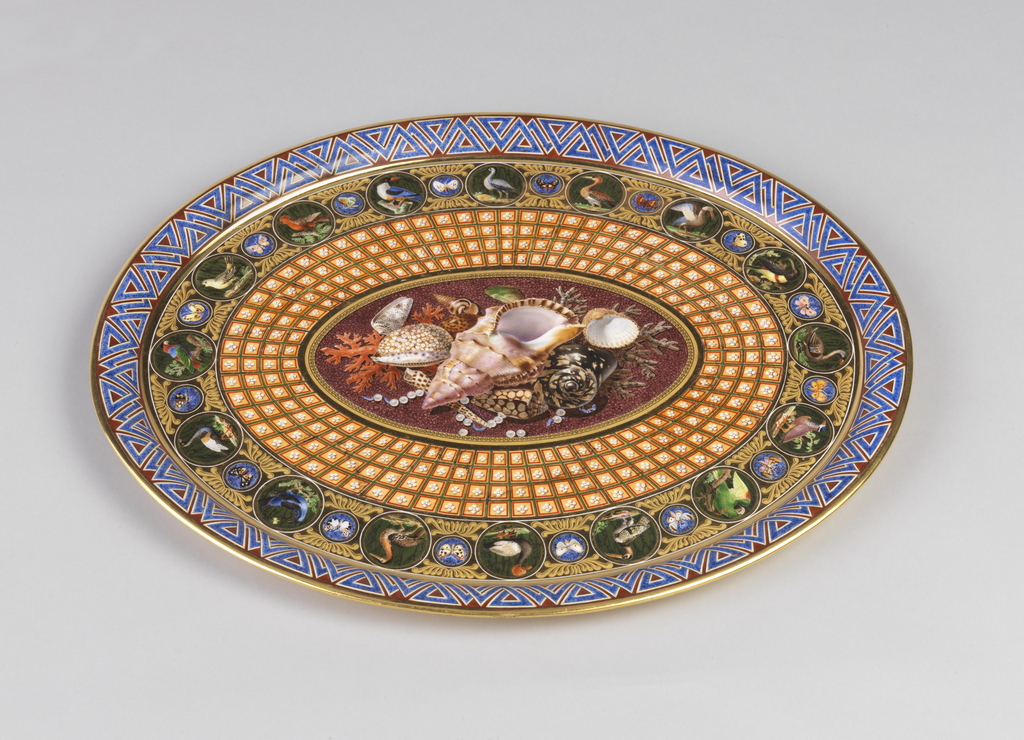This oval tray represents the unique collaborative effort between Alexandre Brongniart, the director of Sèvres appointed in 1800, and his father, the designer Alexandre-Théodore Brongniart.
The younger Brongniart’s passion for the natural world is reflected by the scientific precision of the biological species represented in finely painted enamel. Small roundels of exotic birds and butterflies are accurately described and responsive to the prevailing fashion for specimen collecting. In the background, trompe-l’oeil paintings of lapis lazuli and other hard stones reflect the director’s interest in metals and mineralogy. Sèvres painters were able to replicate the delicate veined surface pattern of the stones, designed to imitate Florentine mosaic work.
The elder Brongniart was a prolific designer whose talent for combining small scale motifs to create larger complex patterns is evidenced by the sophisticated arrangement of the tray. The coffered pattern on the tray’s interior border evokes the domed ceiling of the Pantheon in Paris. The richly colored painting comes at the expense of the porcelain’s characteristic whiteness, here entirely disguised.
The virtuoso accomplishment of the central still life may be the work of Charles-Louis Constans, who painted at Sèvres between 1803 and 1840. The minute trompe-l’oeil shadows cast by opalescent pearls are but one example of the exceptional attention given to detail. The arrangement of shells and fossils were likely modeled after specimens collected the younger Brongniart. More than just scientific curios, butterflies and shells were competitively collected as part of a broader national race between Britain and France.
The tray is part of a breakfast service offered to the Comtesse Montesquiou in 1813. Other pieces in the service are in the Etruscan style. The popularity of such forms during the Empire period at the Sèvres resulted from the influence of Dominique Vivant –Denon’s collection of Greek vases, donated to form the core collection of the newly established Sèvres museum.
Rebekah Pollock is a decorative arts historian specializing in European ceramics and eighteenth-century print culture.
